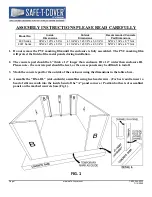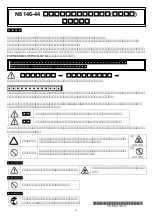
Application Guide
Network Zone Systems
Thermal Management
Network enclosures are widely used both indoors and outdoors to
secure a wide range of electronic equipment such as: switches, routers,
gateways, power supplies, etc. These enclosures are used in a wide
range of markets including: hospitals, manufacturing plants, refineries
stadiums, etc. Therefore, these enclosures are exposed to a wide
variety of ambient conditions.
Such enclosures (figure 1) can have strict ingress ratings such as NEMA
4/4X, IP54/55, etc. These ratings, while protecting the equipment from
some environmental conditions (dust, water spray, etc.), also effectively
trap the heat dissipated by the active equipment inside the enclosure.
This air, that has increased in temperature, must still provide adequate
cooling for the components mounted inside the enclosure.
This application guide gives an overview of key design considerations
for thermal management solutions to mitigate these thermal factors for
Panduit’s zone enclosures. The capabilities of the various thermal
management solutions are discussed and guidelines for recommended
solutions are provided.
Introduction
Most of the power consumed by electronic endpoint devices is dissipated as heat, this is especially true of IT
equipment (switches, servers, routers, etc.). To avoid equipment overheating or even failure, the cooling of this
equipment should be considered as part of the deployment plan. When an enclosure is placed in a high ambient
temperature environment this choice further increases the need to consider cooling options for any enclosure.
Given the stringent sealing requirements for NEMA 4 enclosures, the air inside is completely enclosed severely
limiting the options for cooling the air. Some of the current cooling solutions in the market use fans and vents,
small enclosure mounted air conditioners, liquid cooled heat exchangers, compressed air vortex tubes, etc. In the
solutions section of this document some of the more practical thermal management solutions will be considered
for Panduit Zone Enclosures.
Figure 1: Z23U-624 Enclosure


































